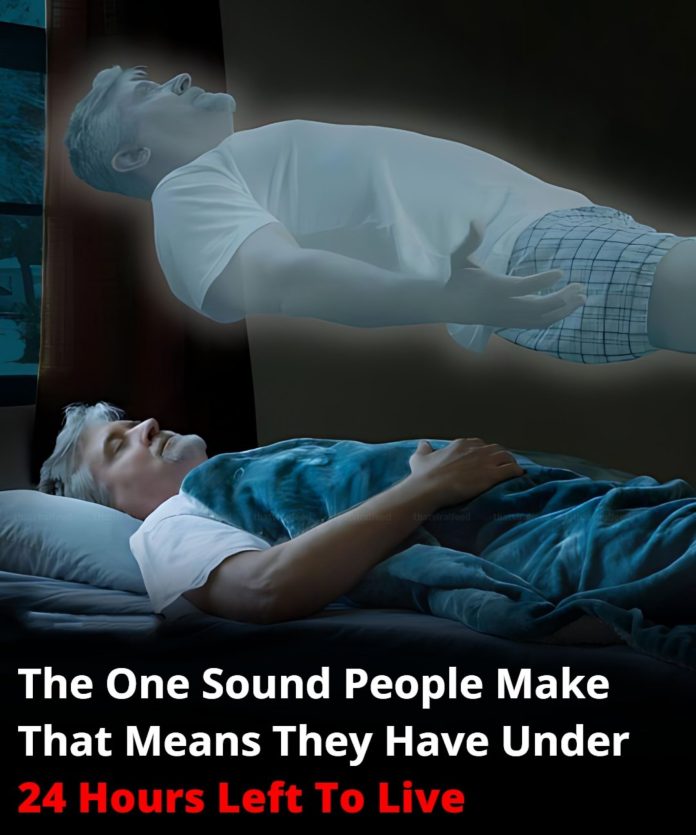As individuals approach the final stages of life, certain physiological changes become evident, signaling that death is imminent. One such indicator is the phenomenon known as the “death rattle,” a distinctive sound that often occurs within the last 24 to 48 hours before death. Understanding the nature, causes, and implications of the death rattle can provide clarity and comfort to caregivers and loved ones during this challenging time.
What is the Death Rattle?
The death rattle refers to a specific type of noisy breathing that occurs in individuals who are nearing death. This sound is characterized by a rattling or gurgling noise during inhalation and exhalation, resulting from the accumulation of saliva and bronchial secretions in the throat and upper airways. As the body’s systems begin to shut down, the ability to swallow or clear these secretions diminishes, leading to this audible manifestation.

Causes and Mechanism
The primary cause of the death rattle is the buildup of fluids such as saliva and mucus in the throat and upper respiratory tract. In the final stages of life, individuals often lose the reflexive ability to swallow or cough effectively, allowing these secretions to accumulate. The resulting airflow over these pooled fluids produces the characteristic rattling sound.
Timing and Prognostic Significance
The onset of the death rattle typically occurs within the last 24 to 48 hours of life, although this can vary among individuals. Its presence is considered a strong indicator that death is imminent. However, while the death rattle suggests that the end of life is near, it is not an exact predictor of the time remaining.
Impact on the Patient and Caregivers
It is important to note that the death rattle is generally not distressing or uncomfortable for the dying individual, especially if they are unconscious or have a reduced level of awareness. However, the sound can be unsettling for family members, caregivers, and healthcare providers, as it serves as an audible reminder of the approaching death. This can lead to increased emotional distress among those witnessing the phenomenon.
Management and Care Strategies
While the death rattle does not typically cause discomfort to the patient, interventions may be considered to reduce the sound for the sake of those present. Management strategies include:
- Repositioning: Adjusting the patient’s position, such as turning them onto their side, can facilitate the drainage of secretions and may reduce the noise.
- Limiting Fluid Intake: Reducing or discontinuing intravenous fluids can decrease the production of secretions, thereby minimizing the occurrence of the death rattle.
- Medications: Anticholinergic or antimuscarinic drugs, such as hyoscine butylbromide, glycopyrronium, or atropine, can be administered to reduce the production of saliva and respiratory secretions. These medications help dry up the secretions, potentially lessening the rattling sound.
Communication and Support
Open communication with family members and caregivers is crucial during this time. Healthcare professionals should provide clear explanations about the nature of the death rattle, emphasizing that it is a common and natural part of the dying process and does not typically cause discomfort to the patient. Offering emotional support and addressing any concerns can help alleviate anxiety and provide comfort to those witnessing the phenomenon.
Differentiating from Other Respiratory Patterns
It is essential to distinguish the death rattle from other abnormal breathing patterns that may occur at the end of life:

- Agonal Respiration: Also known as gasping respiration, this is characterized by labored, gasping breaths and is often a reflexive response during severe medical emergencies, such as cardiac arrest. Agonal breathing indicates a critical condition requiring immediate medical attention.
- Cheyne-Stokes Respiration: This pattern involves periods of deep, rapid breathing followed by episodes of apnea (temporary cessation of breathing). It is commonly observed in patients with heart failure or neurological conditions and may occur during the dying process.
Conclusion
The death rattle is a natural occurrence in the final stages of life, resulting from the accumulation of secretions in the throat and upper airways due to diminished swallowing and coughing reflexes. While it is generally not distressing to the patient, it can be unsettling for those at the bedside. Understanding its causes, implications, and management options can help caregivers and loved ones navigate this challenging time with greater comfort and assurance.

















